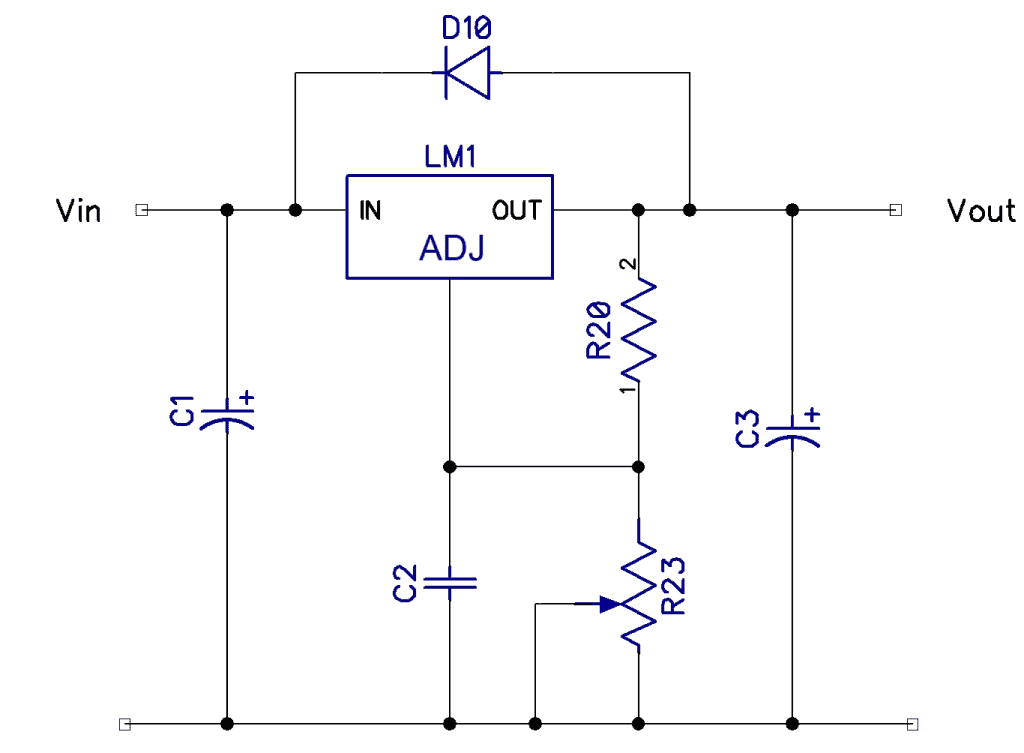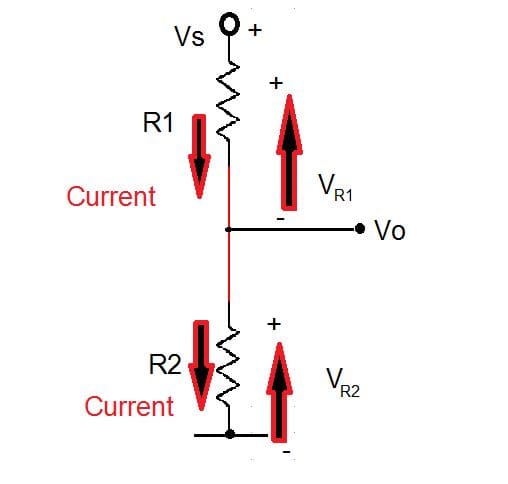A voltage regulator is a device used to change fluctuating voltages on its input to a defined and stable one on its output. Voltage regulators may be mechanical, electric, AC, or DC. In this article, we are going to look at DC electronic linear regulators.
Application of Regulators
Most circuits require a supply voltage that is constant independent of the current consumed. Even a small over-voltage could prove destructive, and this is why regulators should be used. But regulators also help a great deal in eliminating mains hum in audio amplifiers. In signal generators or oscillators, the output frequency will vary with supply voltage and must also be well regulated to keep this constant.
Types of Regulators
There are three main classes or types of regulators: positive regulators where the incoming voltage is positive, negative regulators where the incoming voltage is negative, dual voltage regulators, which are sets of both, e.g., an op-amp circuit, and finally, adjustable regulators where any of the above may be present, but have a control knob to vary the output voltage on demand.
Simple Zener Regulator
A Zener diode is a type of diode that, when connected in its reverse bias configuration (see below), begins to “break down” or conduct at a specific voltage, called its Zener voltage. Once it starts conducting, there is no stopping the current, so a resistor (R1 shown below) needs to limit the current to a safe value.

In the simple regulator above, Vin is 12V, and Vout is 5V, and I is 10mA. Without the Zener R1, then it would be R=V/I = 12-5/0.01 = 700Ω. However, there would be no regulation, as the Zener would not be conducting. Using the rule of thumb, the Zener needs to be conducting two to five times the load current, say 50mA. Given that, it should be I = 50 + 10 = 60mA, so R1 = 7/0.06 = 116Ω.
The problem, however, is that the power dissipation in the R1 and D1 for large load currents will be excessive. But this is quite a suitable circuit for converting signal levels for, say, 5V down to 3.3V modules.
Zener as the Reference and the Transistor Q1

Here we used a Zener as the reference and the transistor Q1 as a series regulator doing the hard work. R2 provides bias to turn Q1 on and supply a much smaller current through the Zener D2. If Vout is 5V, the base-emitter volt drop of 0.6V would be added to that, so D2 would need to be 5.6V (commonly available), and R2 would now have to supply the collector current/hfe of the transistor (say 1000). For a 1A supply, 1/1000 10mA, R2 = 12-5.6/0.01 = 640Ω plus a bit of current for the Zener, say 560Ω.
But this is still a lot of current wasted in heating the Zener. So now, we have added Q5 and a feedback network off Vout to provide a useful circuit:

D4 is no longer critical and can be anything within the range of 1V to 4V and adjustable. As Vout tries to exceed Q5 base/emitter voltage +0.6 + D4, it starts to rob current from the base of Q4 stabilizing the voltage. R6 can now be a more significant value and is not critical as 1k would do well. R7 and R8 will also give a more effortless adjustment.
Let’s take this one step further and add some over-current protection:

The volt drop across D6 and D7 are always going to be 0.6 + 0.6 = 1.2V, and the Vbe of Q6 is also 0.6V. For example, if we choose R14 carefully to match the point we want to prevent any over-current, say 2A, once the V across R14 = 1.2V, D6 and D7 will rob current from Q6 base allowing no further supply current more than 2A.
Hence, R14 = 1.2/2 = 0.6Ω. But there is still one more improvement we can make to prevent big currents in the diodes.

We replaced the diodes with Q9. All it needs is 0.6 to turn it on and cause current limiting. For 2A, that would be R19 = 0.6/2 = 0.3Ω.
Fixed Voltage Regulator
Here, we have the simplicity of a fixed voltage three-terminal regulator. The LM78xx series of voltage regulator ICs come in several different voltages. For example, the LM7812 outputs 12V, the LM7809 outputs 9V, and the LM7805 outputs 5V.

C4 and C10 are not to be confused with smoothing capacitors. They are for noise and stability and should be low ESR (Equivalent Series Resistance). C4 is usually 10uF, and C10 is 1uF. Note that diode D9 is to discharge any large capacitance in the load backward to prevent the regulator from being reverse-biased when the input goes low.
Adjustable Voltage Regulator
And finally, we come to the end of the evolution with an adjustable three-terminal regulator—the famous LM317 voltage regulator, and its negative counterpart the LM337 negative voltage regulator.

C2 is for noise and can be 1uF. The ratio of R20 and R23 set the output voltage. They could be two fixed resistors or an adjustable potentiometer. R20 is shown in the datasheet as a non-standard 240Ω, but if you make it a standard 220Ω, then for any voltage between Vmax and Vmin, R7 = (176* Vout) – 220.
So if you want 9V, R23 could be a fixed value, i.e., 176*9 – 220 = 1k4. Note that as the internal reference is 1.25V as the lowest the regulator can go, it also needs at least 2V between input and output and has a max voltage of 32V so it can provide adjustment from 1.2V to 30V. Make R23 10k.
The power dissipated in the regulator is (Vin-Vout )* Iout. So for a 12V in and 5V out at 1A, the power is (12-5)*1 = 7W. It is counter-intuitive, but this means the regulator is dissipating most power when it is set to its lowest output voltage.
If you will take more than 1A out of the regulator or too hot to hold with your fingers, it needs a heatsink. You can try mounting it on the casing of the aluminum box you are using or mount it on a piece of flat aluminum or, better still, on a proper heatsink and guess the size. You should be able to hold the regulator device comfortably without burning your hand or fingers.
Be sure to leave a comment below if you have any questions!





NICE ARTICLE, CLEAR AND WELL EXPLAINED. THANKS. CONTINUE SOON THIS SERIES!!
Which circuit you described is the simplest that will step 15.5V down to 12V and keep it staedy at 12V? Thanks for the great content.
Oh and the electronic speedometer i need the circuit for calls for a 1 amp fuse. So the current demand will be small.
can i know what reference is used for this article
Great stuff, and thanks for this absolutely fantastic resource. I’ve been looking for a voltage regulator circuit for several days, but nothing fits my bill. I need to take 12v @ 1a from a wall art to power some circuits I want to build to help demo some electronics principles to my adult son. BUT…I have a small and limited stock of parts and components and no funds to expand it, being 72yo, disabled and living on SSA. Mostly, I lack zener diodes and any type of ICs, much less any number to select from.
So, is there a way to build a fairly stable regulator with only unknown transistors? I have a bunch of those that I have sorted in to NPN and PNP. Found several MOSFETs in the pile, too. But everything is marked with strange numbers that make ZERO sense, and I cannot identify any of them using the four common numbering conventions. But base types are established. Only.
Voltage regulators play a crucial role in ensuring stable power supply for various circuits! ⚡ It’s fascinating to learn about different types, from simple Zener regulators to fixed and adjustable options like the LM78xx and LM317 series. Their ability to maintain a constant output voltage, even when the input fluctuates, is essential for protecting sensitive electronics and preventing damage. Plus, the detailed explanations of circuit configurations and calculations make it easy to understand how to implement them effectively! 🛠️ If anyone has questions about specific applications or setups, feel free to ask! 😊
Thank you so much. My project is to use a voltage regulator to limit the movement of my gas tank that lacks any kind of baffles such that the gas gauge fluctuates quite significantly.
Absolutely helpful resource! I’m just having a bit of trouble understanding how the Q9 transistor in the Zener diode regulator circuit helps keep the current below a certain current as a huge current might flow through it’s base terminal when voltage across R19 equals 0.6V. Please explain.
Zener-based regulators provide a simple and cost-effective solution for voltage stabilization, but their efficiency drops at higher currents due to power dissipation in the resistor and diode. For better regulation and efficiency, integrating a transistor as a pass element can significantly improve load handling while maintaining stable output voltage.